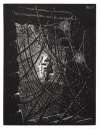Otto
Dix
Otto Dix, a pivotal figure in German art, is celebrated for his unflinching portrayals of the brutality of war and societal decay, and his contribution to the New Objectivity movement. If you’re looking for original Otto Dix prints and editions for sale or would like to sell, request a complimentary valuation and browse our network’s most in-demand works.
Otto Dix art for sale
Discover Otto Dix prints for sale, exclusively available through our private network of collectors. Explore signed and unsigned screenprints, lithographs, digital prints, and rare editioned proof prints by era-defining blue chip artists.
Sell Your Art
with Us
with Us
Join Our Network of Collectors. Buy, Sell and Track Demand
Biography
Otto Dix was born in 1891 in Germany. Growing up in a working-class family, he showed early artistic talent that earned him an apprenticeship with a decorative artist. His early influences were rooted in German Romanticism, but World War I affected his outlook, steering him towards a darker exploration of humanity. After serving in the war, Dix attended the Dresden Academy of Fine Arts, where his distinct style began to take shape. His early works combined expressionistic fervour with a stark realism, reflecting the gruesome realities he experienced as a soldier.
Dix's art became increasingly satirical and critical of post-war German society. His seminal work The Trench caused public uproar for its grotesque depiction of war's devastation. As a prominent figure in the New Objectivity movement, he focused on the corruption and decay he saw around him. His works during the Weimar period, like Portrait Of The Journalist Sylvia Von Harde, epitomised his incisive critique of contemporary society.
Despite facing persecution from the Nazis, who branded his work as “degenerate,” Dix continued to paint, often in secret, under strict censorship. He was conscripted into the Volkssturm towards the end of the World War II and briefly held as a prisoner of war. After the war, Dix continued painting but in a more subdued style, reflective of a changed political landscape. He remained active in the art world until his death in 1969, leaving behind a powerful legacy that has influenced generations.
Dix's career was defined by his unwavering commitment to artistic truth. His experiences in the war significantly influenced his art, pushing him to depict the stark realities of conflict. Dix's early paintings were imbued with vibrant colours and dynamic compositions, but his focus soon shifted to a more raw and realistic portrayal of his subjects. His series Der Krieg captured the war's horrors with clinical precision, making it a landmark in war art.
Throughout the 1920s and 1930s, Dix's work became a scathing commentary on society. He laid bare the corruption and decadence of the Weimar Republic with a ruthless eye. His triptych Metropolis contrasts the glamour of the urban elite with the squalor of the impoverished, reflecting the glaring disparities in post-war Germany.
Dix's legacy is tied to his resistance to political pressures. Despite being dismissed from his teaching post in 1933 and seeing many of his works destroyed by the Nazis, he continued to paint in defiance. His later works, such as The Seven Deadly Sins, conveyed his disdain for the Nazi regime through allegorical imagery.
Post-war, Dix’s style evolved as he focused on religious and allegorical themes. Though less provocative than his earlier work, paintings like The Crucifixion display the depth of his reflection on the human condition. His influence extends far beyond his own lifetime, impacting post-war German artists and contemporary painters who continue to explore the darker aspects of society through art.



























